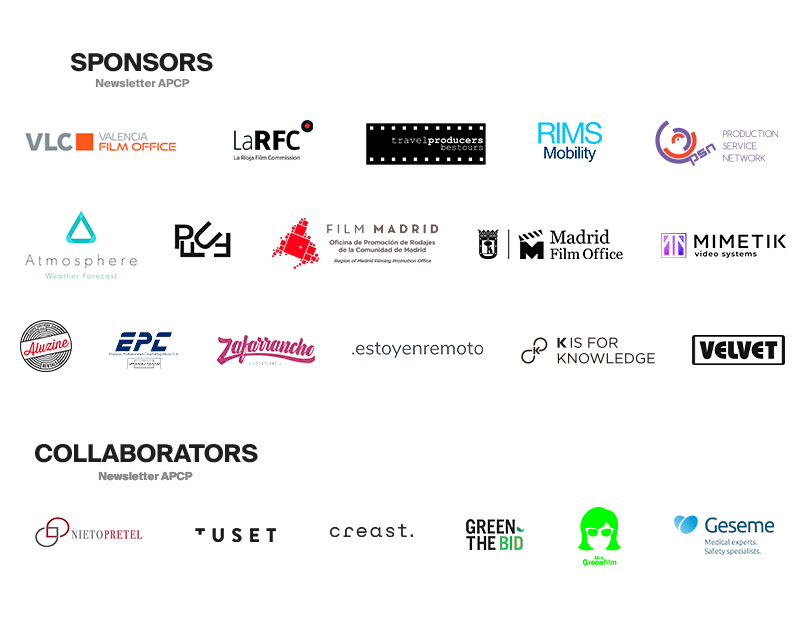
We are increasingly moving towards a greener audiovisual world and are taking into account the real importance of environmental sustainability.
Green the Bid, the organisation focused on helping the advertising industry to become a sustainable sector, organised an event together with AICP at the Town Hall, where a complete outline for audiovisual advertising productions was presented.
The GTB organisation explained the steps needed to create and organise an environmentally friendly production.
The real source of pollution in filming is fuel consumption.
The results were as follows:
Production companies use transport and travel for filming, almost 70% of which comes from these actions and the result increases by almost 90% when agency flights are added.
This makes the final consumption of pollution 69.8%.
Therefore, they pointed out the following steps to be able to move towards the goal of green production.
- Approach a project as a local shooting
- Develop a project in a location where it can be accessed by public transport.
- Create a virtual production (use of software)
- Make agencies aware of the carbon implications of each traveller to a filming location in their offer letter, so that the team can be informed and assess their choices.
They added that agencies should develop projects to start building and take into account the consideration in building the industry in this sector.
GTB, indicated that those agencies and brands which apply for “Green The Bid” will have to budget an additional 1% on top of the production and post-production budget to ensure that sustainability is managed.
They named the companies/tools which are responsible for eliminating those factors that damage the environment and impact on production, such as :
- AdGreen
- Creast
- Ecoprod
- Green Producer’s Tool
- Pears
On the other hand, they focused on the “Job Awards” (which is a job recognition focused on carrying out a sustainable sector awarded by GTB), it has three steps:
Prepare a timeline.
Notify your department head.
Resources to prepare for production.
Make sure that whoever is responsible for sustainability in production is integrated as early as possible in the planning and preparation stages.
They will need to understand production resources and team dynamics, how to coordinate with department heads during preparation and shooting, learn how to make the production sustainable, and have passion and energy around the issue.
Without a dedicated sustainability contact person or team, it will be impossible to achieve a truly sustainable set.
With regard to carbon calculation and offsetting, they indicated that it is essential because it helps to be able to understand the environmental impact of a project.
- Record all flights undertaken to manage production (including flights by agency and brand).
- Take into account the size of the set and number of days of pre-lighting and filming.
- Know the number of crew members
- Accommodation, meals, transport, generators and the different departments to be taken into account to ensure budgeting.
They went on to explain why it is an offset, taking these factors into account:
Carbon offsetting is “an action that offsets the emission of CO2 or other greenhouse gases” explained Miriam Webster Dictionary.
The organisation explained that offsetting alone was not enough, because the carbon market is brand new and the price is constantly changing.
GTB ended the event by explaining the actions that can be taken by the industry at the office level.
-The use of plastic products (bottles, bags…) can be replaced by more environmentally friendly products, use of sustainable lunches, reduction of water consumption, use of software (less use of paper), reduction of electricity consumption and other factors.
By implementing these resources, sustainable production could be created and organised, not only for the producers but also for the public. Showing more responsible production could be an opportunity to educate society to be sustainable.
With reference to producers focused on adding value to create sustainable production, many of them elaborate and develop systems to join this sector globally.
Meanwhile, in Europe, the network of Advertising Film Associations, of which APCP is a member, is taking the same path and working intensively with Adgreen (the advertising industry’s approach to eliminating environmentally damaging factors that impact on production), the UK development system and other approaches.
The goal of CFP-E is to create a system in which there is consistency and expansion in order to achieve better sustainability in the sectors.
The environmental impact of a commercial should be straightforward because it is essential that a production company does not rely on a large financial cost in terms of independent staff.
In addition, the main factors are usually taken into account when shooting a film: number of shooting days, travel, etc. However, disposable items are often left out of the equation. In order to focus on a sustainable system, awareness of the matter should be promoted.
This information can be well applied to create a sustainable production and to persuade the public to focus on the environmental impact when filming.
Meanwhile, in Spain, we will soon be unveiling new tools that will be applied in our audiovisual production sector of advertising filmmaking.
By Claudia Cabezas.



